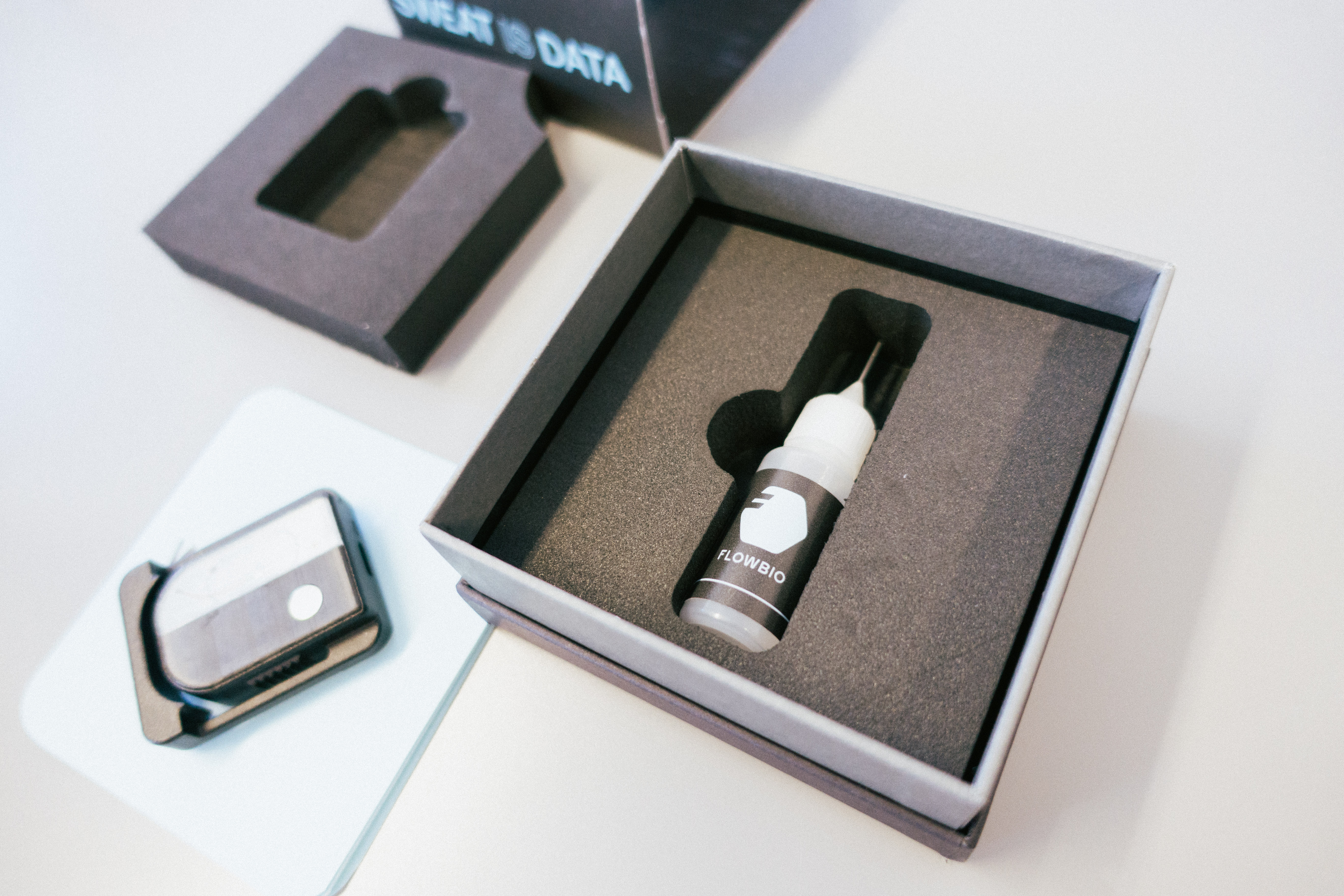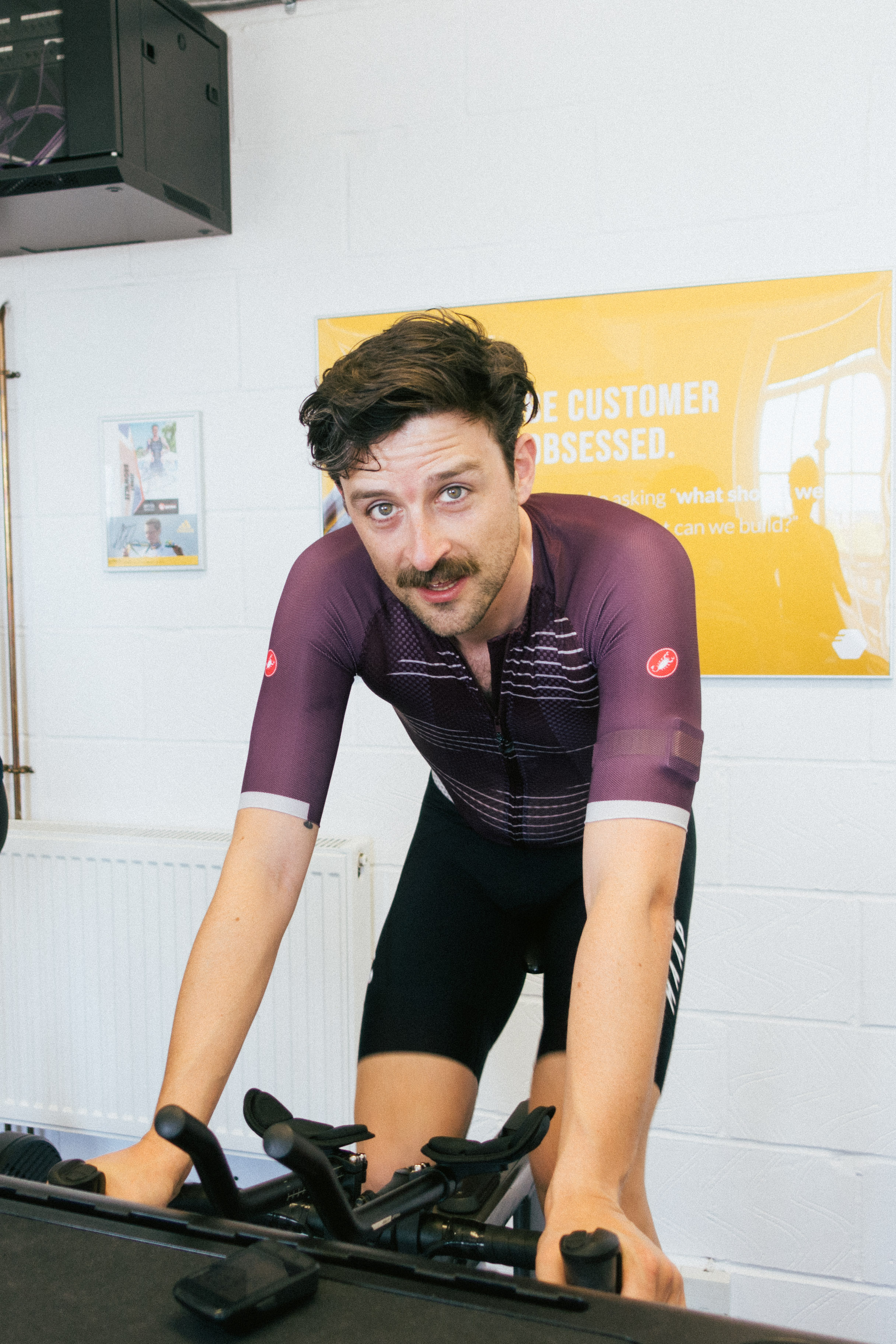
The 'athlete as a human machine to be optimised' is not a new concept, but in recent years the proliferation of wearables has been frantic. The days of happily slapping on a heart rate monitor are gone; now we have power measurements, core temperature sensors, blood glucose monitors, and watches that shower you with scorn when you haven’t recovered right or got the perfect duration of sleep.
Hydration, though, has been a relatively untapped well of data until now. Garmin has for some time had a predictive hydration feature, but it’s not based on any actual measurements. Real measurements of water loss and sodium loss have been possible but in a lab. Enter from stage left, Flowbio; a startup based in London offering a small, wearable sensor that tells you how much fluid and salt you’ve lost after your ride (or run, if that’s your cup of tea), and importantly what you can do about it.
I spent a day at its HQ and undertook a live test of the sensor to bring you a glimpse of the future. The sensor, as I’ll go into, is essentially sold out for the short term at least, but regardless it was one of the most eye-opening days I’ve had in some time and well worth talking about.




The company
Flowbio is, in the context of the athletic data industrial complex, a small outfit that from what I can tell cascades down from CEO and human ball of energy Stefan van der Fluit. Based in a series of units in a converted biscuit factory (with charming names like ‘almond studios’) the Flowbio team has developed, tested, and manufactured its S1 sensor in-house.
There’s the main office, but adjacent is an extremely sweaty test room complete with a pair of Wahoo Kickr bikes and a treadmill for athletes to undertake testing. Across the hall is the factory floor, so to speak, where the sensor housings are all 3D printed, and then assembled, packed, and shipped out; truly a cottage industry, but bang up to date.

The sensor
The S1 is, confusingly, the second iteration of Flowbio’s hydration sensor. The first iteration was still a wearable unit, but relied on a single-use stick on housing; not the most sustainable thing in the world, but more importantly asking athletes to constantly stick things to themselves I was told was just a barrier to it becoming a part of the normal routine.
Roll onto the S1 and it simply clips onto an existing heart rate strap or an arm strap in the case of my test unit. It’s small, and more or less takes the same form as the well-established Core body temperature sensor.
On the outside of the 3D-printed housing is a single button, used for pairing, and on the inside next to the skin is an extremely small aperture into which your sweat flows to be measured.

The test
The test naturally begins with a run-through of what I would receive if I was a customer. One small box contains the sensor, the usual quick start guide, and curiously a small empty bottle with a needle-like attachment. This, I was told, is to occasionally flush the sensor through with clean water to keep it in tip-top condition.
Pairing was a relatively simple affair, though the S1 companion app is only supported on iOS for now so I did have to borrow an iPhone. Once the sensor is paired up there's just a final step of linking it with your preferred fitness tracking platform (Wahoo, Garmin, Polar, Zwift, Coros, and TrainingPeaks all supported) before hopping onto a Kickr bike for an hour and a bit in a hot room.
If you want a deep dive into how the sensor works, and its accuracy, Flowbio has published a white paper. The abridged version is that whole body fluid loss (WBFL) was calibrated against the standard measure of whole nude body mass before and after exercise, with fluid intake measured to account for any mass gain.
Whole body sodium (WBS) was calibrated by having athletes wear adhesive reservoir patches during exercise, with the sweat collected via a syringe and analysed. These data points were then used to create the company's proprietary algorithm which scales up the data collected from the sensor, taking into account the exertion from distance, time, power, heart rate, and body size. Flowbio claims it shows excellent agreement with lab-based data collection methods, and is evidently more convenient. Interestingly the data shows better agreement at higher fluid loss rates, so the harder you’re working the better the data is.

The data
I am not a data nerd it must be said, but primarily I think that’s because a lot of it isn’t actionable. Power data is interesting, but without a training plan that makes use of it, it is effectively just a nice number to look at. The same goes for heart rate, and calorific data (inaccurate as calorific estimates provided by a head unit are) are an easy way to give yourself an eating disorder as I have found out.
Stefan, riding next to me during my sweaty hour, impresses on me the importance of actionable data. Knowing how many litres of fluid you lost and how many milligrams of sodium is interesting, but useless if you don’t know what that equates to in terms of food or drink. The neat thing about the S1 companion app is that you can link it with your preferred provider of hydration products (SiS, Precision Hydration et. al.) and the app will not only tell you what your WBFL and WBS figures are, but what you can do about it: Take three tabs in two bottles of water, in my case. No weighing out table salt.
Currently, the data is limited to a post-ride system, but in the fullness of time, real-time hydration data is very much on the cards. What this will entail remains to be seen. It could be literage and sodium fields next to your HR and mileage on your head unit, or simply alerts warning you that you are losing more fluid and salt than usual for a given level of exertion.



Verdict
In my short time with the Flowbio S1 sensor, I must say I was very impressed. The focus on actionable data is to be applauded, and the whole system seems extremely well thought out. Obviously, it being iOS only is a bit of a drawback at the moment, but I’m sure that is something that’ll be addressed in due course.
I am perennially prone to headaches, which I always put down to just not drinking enough. With an hour with the S1, I learned that not only am I furiously sweaty, but also extremely salty, losing around 1.7g of sodium for every litre of sweat. Within my session, I managed to pump out just shy of a litre of water and 1,615mg of sodium, which explains why I am quite so headache-prone.
Considering I only ever use hydration tabs for big rides on hot days it’s no wonder I often feel a little off. The 1500mg tablets are the strongest that Precision Hydration makes, for example, and in order to properly replenish myself I’d need to be taking one of those every hour. Clearly a massive deficit, but also, with what is a very easy-to-use and interpret system, something that’s super easy to rectify.

The price is worth discussing too. The sensor itself is £329, which is more expensive than the Core sensor, but I’d go so far as to say it’s a lot more useful for a lot more people. There is also the cost of all the extra hydration products you may need to purchase - If I take the Precision Hydration example I’d need approximately one tab every hour, which is about 89p worth. Over the course of a week, you could easily clock up ten quid’s worth, or £40 a month. Cheaper if you buy in bulk of course, but it’s enough to make me think about making my own mix.
All in all, though my first impressions are excellent, and I think with enough time having these more or less permanently mounted to ones HRM will be the norm for many enthusiastic amateurs; the pros are already at it, with several WorldTour teams already adopting Flowbio, and we all know what the pros do we all follow to some degree.







